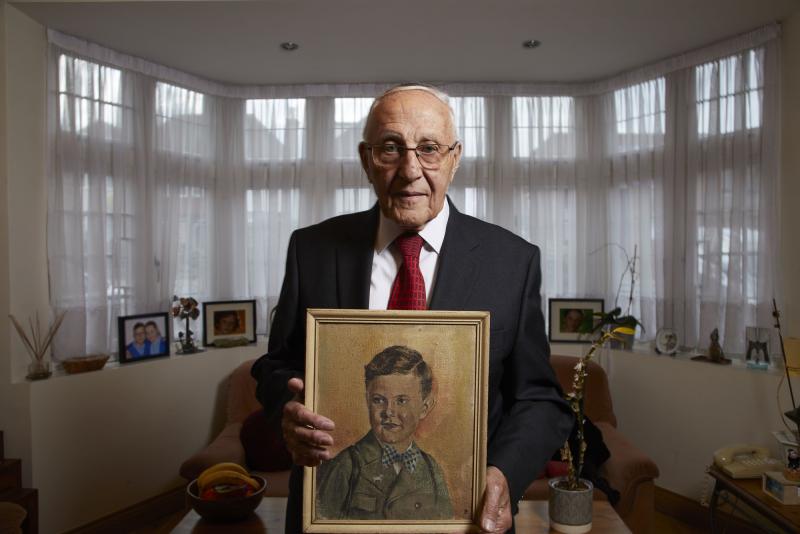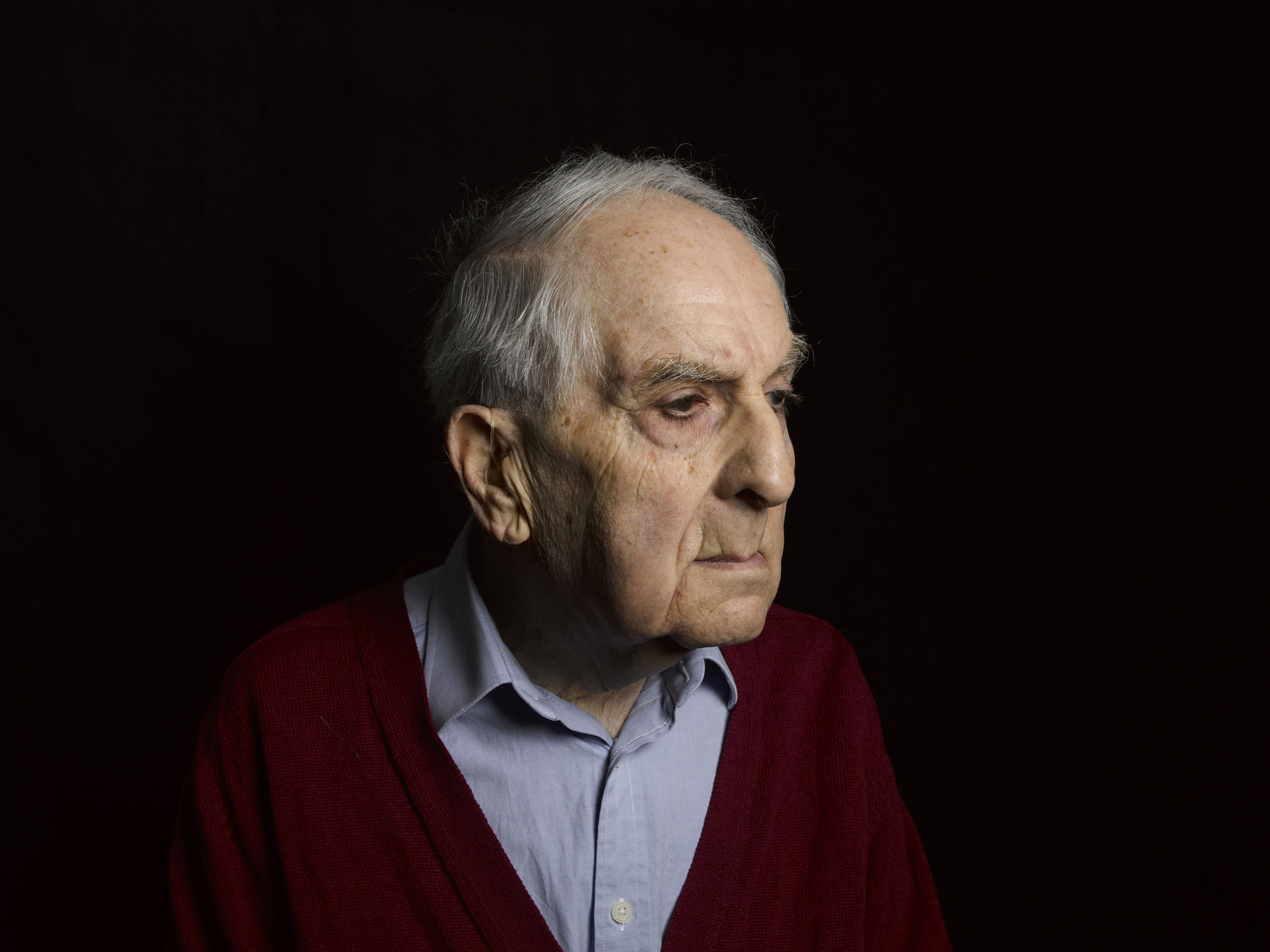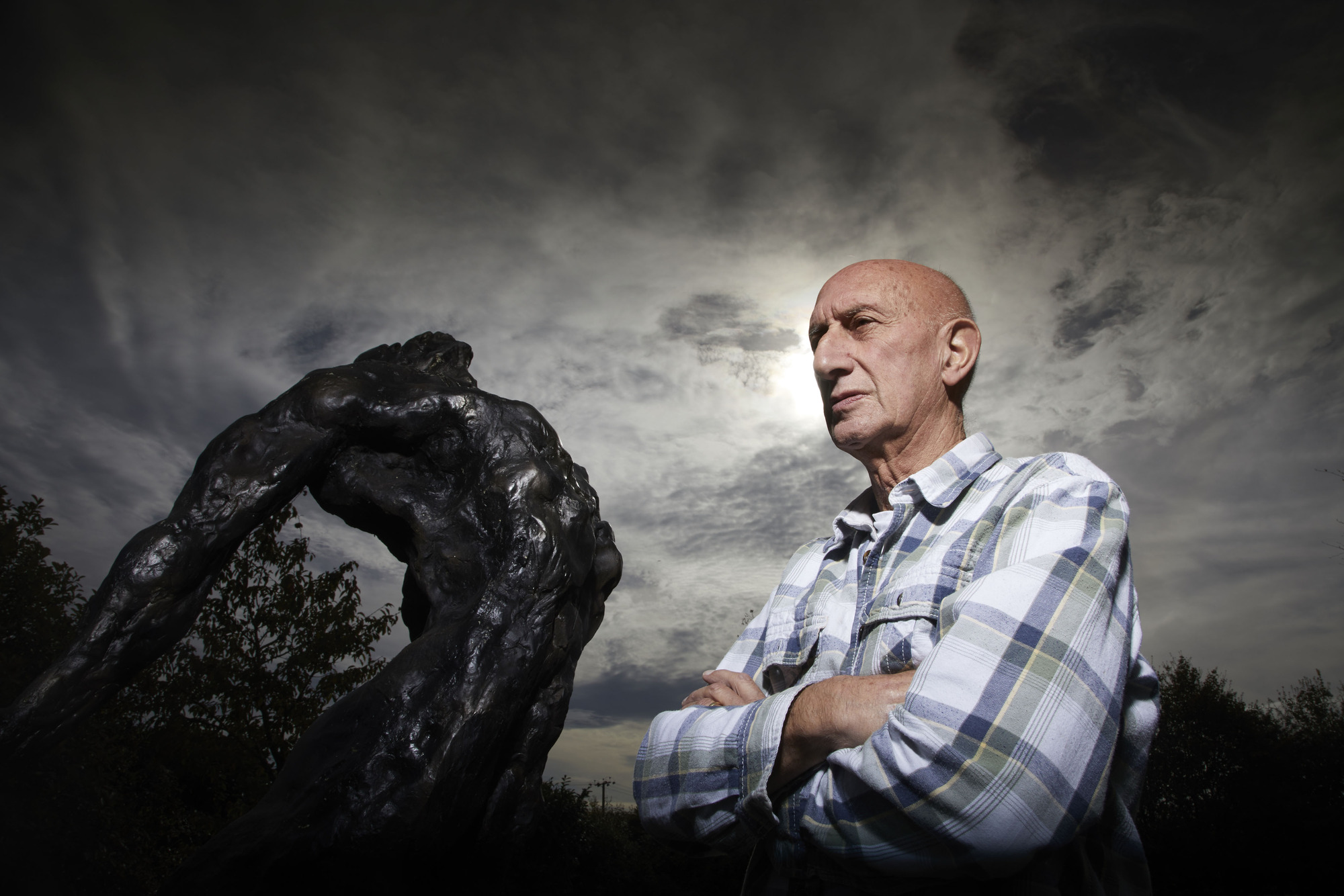The Last Survivors, BBC Two review - living on | reviews, news & interviews
The Last Survivors, BBC Two review - living on
The Last Survivors, BBC Two review - living on
Harrowing Holocaust testimony from some who came through the concentration camps

When they were children the interviewees in this film – the last survivors – were taken away in incomprehensible circumstances, on their way to be murdered for who they were, in Germany and places further east.
In spite of the sheen of normality as we met these elderly people in their apparently comfortable homes, it was almost unbearable to watch. What some of the survivors asked even now was what could they do with their anger, which is still internalised. What unfurled slowly and so poignantly was that for so many, in spite of long and often professionally successful lives, with families of their own, even with therapy, the traumas persist. Almost all lost all: parents, siblings, wider families, friends, who remain only in memory. Some still recall their mothers turning to them, with a last hug, a murmured word of love. Survivors’ guilt, too, seemed omnipresent.
Everything reminds Ivor Perl of something connected with his past: Grenfell Tower impressed him horribly when he saw the flames. He could see his family being burnt alive in the camps: over two million children were burned and gassed. Now he wants to live the few years he has left without too much pain for himself, his family and the world in general. He said that he felt he could not communicate with others properly because others just don’t, just can’t know; they have not seen their parents murdered, seen the gas chambers. Frank Bright (pictured above) showed us a photograph of his school class in Prague in May 1942. He had made it his mission to find out what happened to all his friends, each marked with their fate as they were sent from the ghetto to Auschwitz. From one trainload of more than 2,000 people, only 144 survived, murdered for no reason except that they were Jews.
Frank Bright (pictured above) showed us a photograph of his school class in Prague in May 1942. He had made it his mission to find out what happened to all his friends, each marked with their fate as they were sent from the ghetto to Auschwitz. From one trainload of more than 2,000 people, only 144 survived, murdered for no reason except that they were Jews.
The sculptor Maurice Blik (pictured below) remembered being a child in Belsen at the age of only five. He had found a carrot that had been thrown away and modelled it into a tiny boat for his sister Millie, for her birthday: she was not yet one, and had been born in the camp. She died before her first birthday and he put her body on a pile of other corpses. He was never able to give her the present; his therapist had told him it was his first sculpture. He could not follow up his early ambition to be a doctor because he did not want to deal with death; his substantial bronze sculptures, however, he sees as giving life to anguished human form. To this day he does not know what happened to his father, who was taken to Auschwitz: his wife Debra remarked that his father’s likeness is to be found in all of Blik’s sculptures.
The underlying premise of the film was articulated by the redoubtable Anita: no-one can make sense of it
Anita Lasker-Wallfisch was 20 when she finally came to England, and when she had her own family, she was unable to explain that there were those who had desired so much to annihilate the Jews and other undesirables in as thorough a way as possible. Her own survival had been down to luck: she had already been prepared for the gas chamber when it was found out that she played the cello. She was conscripted not to death but into the camp orchestra. They played marches for those being taken off to work as slave labourers.
The underlying premise of The Last Survivors was articulated by the redoubtable Anita: no-one can make sense of it. Anita wanted to have a normal life, but the Holocaust did not fit into normality. Her own mantra had been that anybody who has a roof over their head and enough food to eat should forget the trauma.
Statistics and facts punctuated these layered narratives. Eighty percent of those arriving on the trains were taken off immediately to be killed; others were saved for slave labour. Do not say you were under 15, you would automatically be marked for death. On arrival, if gestured to the left, you would live, if you looked strong enough to work; but to the right, and it was straight to the gas chamber. One survivor said he always wondered which of the flames was his mother? There were returns, of sorts. We went with one survivor, his daughter and granddaughter to Auschwitz on a tour: it all looked so banal, a factory for killing people, an abattoir for humans. When Lasker-Wallfisch visited the Bundestag, the President described the systematic industrialised genocide of the Jews; later she remarked that the vision of Mrs Merkel letting in the immigrants has brought out the worst of the Germans, with the rise of the right-wing Alternative for Germany party. She told the Bundestag that hate is poison and ultimately those who hate poison themselves, then was struck by the resurgence of antisemitism.
There were returns, of sorts. We went with one survivor, his daughter and granddaughter to Auschwitz on a tour: it all looked so banal, a factory for killing people, an abattoir for humans. When Lasker-Wallfisch visited the Bundestag, the President described the systematic industrialised genocide of the Jews; later she remarked that the vision of Mrs Merkel letting in the immigrants has brought out the worst of the Germans, with the rise of the right-wing Alternative for Germany party. She told the Bundestag that hate is poison and ultimately those who hate poison themselves, then was struck by the resurgence of antisemitism.
Manfred Goldberg went back to Germany for the first time since 1946, when he arrived in Britain as a child. In Kassel he spoke at the placing of a memorial brass set into the pavement in front of what had been his family home: these stumbling stones, stolpersteine, are being placed all over Germany to mark the places from which Jews, and others, had been taken away. We can only hope that they will prompt memory. Again and again we were told in different ways the self-evident truth that soon no witness will be left alive; when these survivors are gone, there will only be the history books. Auschwitz, the most notorious camp of all, was liberated on 27 January, 1945. The date is marked as Holocaust Remembrance Day. It is time to try to continue to remember.
rating
Explore topics
Share this article
The future of Arts Journalism
You can stop theartsdesk.com closing!
We urgently need financing to survive. Our fundraising drive has thus far raised £49,000 but we need to reach £100,000 or we will be forced to close. Please contribute here: https://gofund.me/c3f6033d
And if you can forward this information to anyone who might assist, we’d be grateful.

Subscribe to theartsdesk.com
Thank you for continuing to read our work on theartsdesk.com. For unlimited access to every article in its entirety, including our archive of more than 15,000 pieces, we're asking for £5 per month or £40 per year. We feel it's a very good deal, and hope you do too.
To take a subscription now simply click here.
And if you're looking for that extra gift for a friend or family member, why not treat them to a theartsdesk.com gift subscription?
more TV
 Blu-ray: The Sweeney - Series One
Influential and entertaining 1970s police drama, handsomely restored
Blu-ray: The Sweeney - Series One
Influential and entertaining 1970s police drama, handsomely restored
 I Fought the Law, ITVX review - how an 800-year-old law was challenged and changed
Sheridan Smith's raw performance dominates ITV's new docudrama about injustice
I Fought the Law, ITVX review - how an 800-year-old law was challenged and changed
Sheridan Smith's raw performance dominates ITV's new docudrama about injustice
 The Paper, Sky Max review - a spinoff of the US Office worth waiting 20 years for
Perfectly judged recycling of the original's key elements, with a star turn at its heart
The Paper, Sky Max review - a spinoff of the US Office worth waiting 20 years for
Perfectly judged recycling of the original's key elements, with a star turn at its heart
 The Guest, BBC One review - be careful what you wish for
A terrific Eve Myles stars in addictive Welsh mystery
The Guest, BBC One review - be careful what you wish for
A terrific Eve Myles stars in addictive Welsh mystery
 theartsdesk Q&A: Suranne Jones on 'Hostage', power pants and politics
The star and producer talks about taking on the role of Prime Minister, wearing high heels and living in the public eye
theartsdesk Q&A: Suranne Jones on 'Hostage', power pants and politics
The star and producer talks about taking on the role of Prime Minister, wearing high heels and living in the public eye
 King & Conqueror, BBC One review - not many kicks in 1066
Turgid medieval drama leaves viewers in the dark
King & Conqueror, BBC One review - not many kicks in 1066
Turgid medieval drama leaves viewers in the dark
 Hostage, Netflix review - entente not-too-cordiale
Suranne Jones and Julie Delpy cross swords in confused political drama
Hostage, Netflix review - entente not-too-cordiale
Suranne Jones and Julie Delpy cross swords in confused political drama
 In Flight, Channel 4 review - drugs, thugs and Bulgarian gangsters
Katherine Kelly's flight attendant is battling a sea of troubles
In Flight, Channel 4 review - drugs, thugs and Bulgarian gangsters
Katherine Kelly's flight attendant is battling a sea of troubles
 Alien: Earth, Disney+ review - was this interstellar journey really necessary?
Noah Hawley's lavish sci-fi series brings Ridley Scott's monster back home
Alien: Earth, Disney+ review - was this interstellar journey really necessary?
Noah Hawley's lavish sci-fi series brings Ridley Scott's monster back home
 The Count of Monte Cristo, U&Drama review - silly telly for the silly season
Umpteenth incarnation of the Alexandre Dumas novel is no better than it should be
The Count of Monte Cristo, U&Drama review - silly telly for the silly season
Umpteenth incarnation of the Alexandre Dumas novel is no better than it should be
 The Narrow Road to the Deep North, BBC One review - love, death and hell on the Burma railway
Richard Flanagan's prize-winning novel becomes a gruelling TV series
The Narrow Road to the Deep North, BBC One review - love, death and hell on the Burma railway
Richard Flanagan's prize-winning novel becomes a gruelling TV series
 The Waterfront, Netflix review - fish, drugs and rock'n'roll
Kevin Williamson's Carolinas crime saga makes addictive viewing
The Waterfront, Netflix review - fish, drugs and rock'n'roll
Kevin Williamson's Carolinas crime saga makes addictive viewing

Add comment